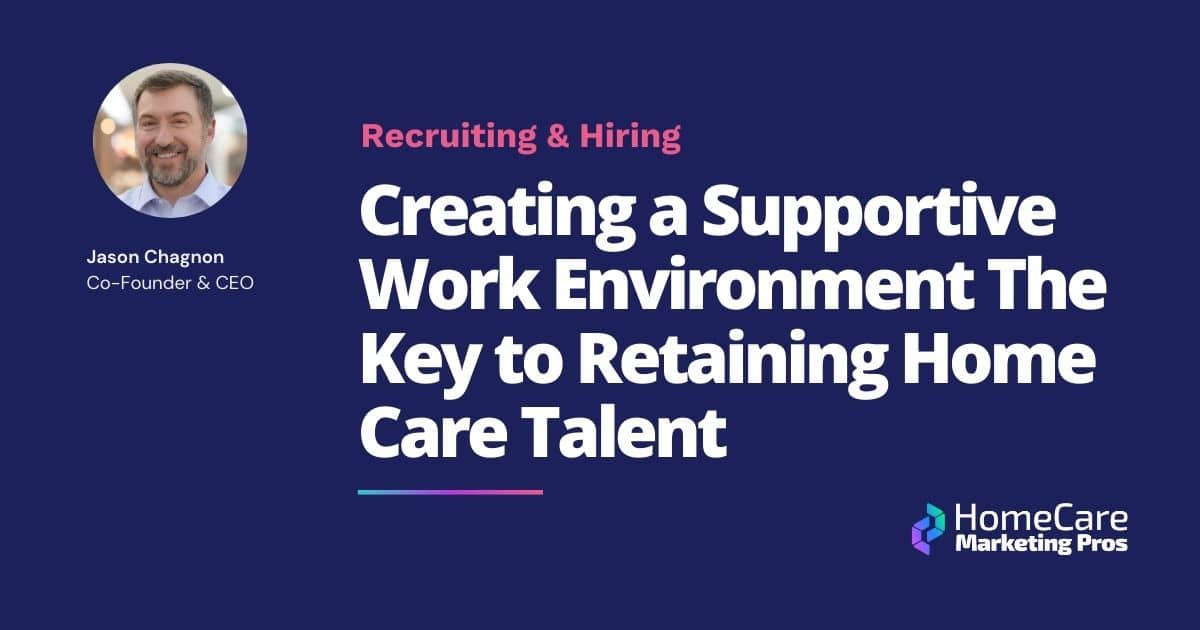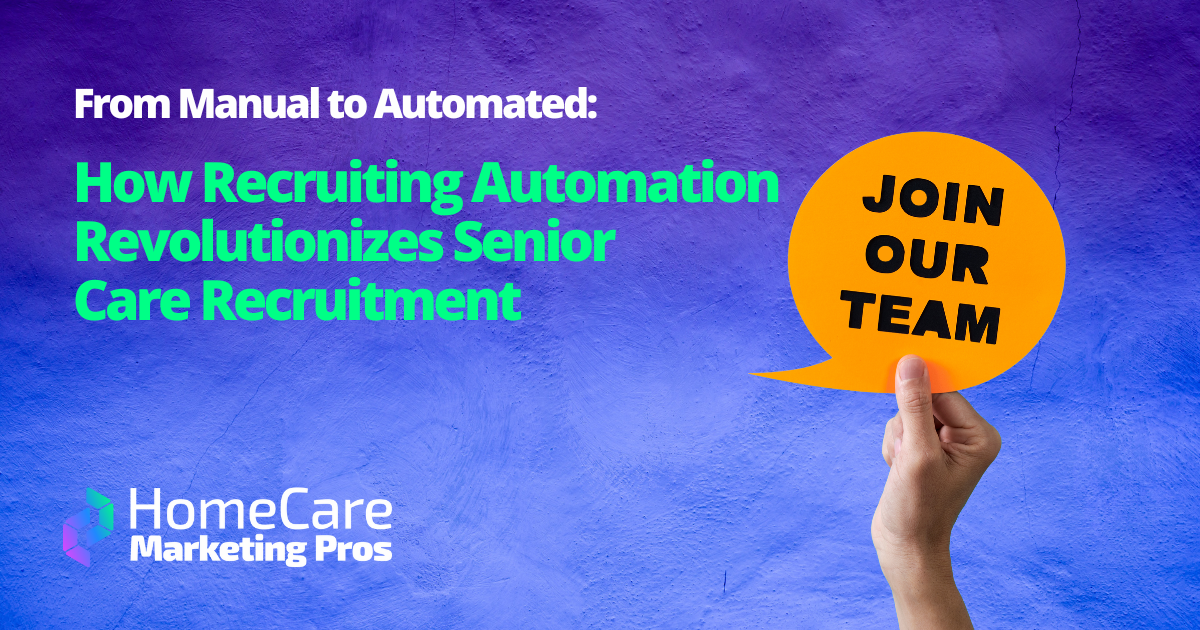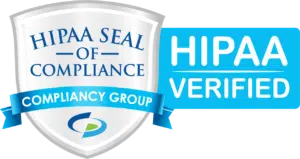4 Factors to Consider When Building an Employee Referral Program
How to build an employee referral program that reduces cost and time-to-hire while improving the quality of your caregiver leads

Workers have the upper hand in the current job market. There are more open jobs than there are available workers, and those willing to make a change are waiting until they find the right employer with the right benefits, compensation, and company culture.
But caregiver agencies need talent fast. It’s a growing field and those looking to hire caregivers need all the help they can get to fill their recruitment funnels. To speed up the process and increase the quality of caregiver leads, consider deploying an employee referral program.
What is an employee referral program?
An employee referral program is a recruiting strategy in which the employer incentivizes current employees to refer their qualified contacts for open jobs.
Do you need an employee referral program?
If you need to improve the quality of your candidates, hire caregivers quickly, and retain your workforce, an employee referral program is a smart addition to your recruiting strategy.
1. Lower your recruiting costs
According to a survey conducted by Clutch, 55% of companies that have employee referral programs say it lowers their cost-to-hire.
2. Hire faster
When you need to hire great caregivers quickly, enlisting the help of your existing workforce can significantly speed up the process.
According to a LinkedIn report, it takes companies an average of 55 days to fill an open position using traditional recruiting methods, but only 29 days to fill an open position using referral methods.
3. Keep your hires longer
Referred hires will stay at your agency longer. JobVite found that 33% of hires made from career sites and 22% of hires made from job boards stay at least one year, while 46% of hires made from referrals stay for at least one year. The retention rate is even better over three years.
There’s not a lot of downside to an employee referral program. It’s possible to end up with too many leads that don’t have the right qualifications, but there are ways to avoid an overflowing funnel.
4 factors to consider when building an employee referral program
1. Getting buy-in from your leadership team
Referral programs require a budget of some kind, so before you roll it out, be sure to win the support of company leadership.
2. Parameters
Employee referral programs always have some kind of parameters. For example, the referring employee receives the pay-out only if the new hire stays for at least 90 days. This can help ensure you get higher-quality referrals.
3. Incentives
The most successful employee referral programs use incentives, like cash (sometimes called a referral bonus), extra paid time off, gift cards, or discounts.
4. Length of the program
Is your employee referral program part of a specific hiring push or an always-on incentive? This should be clearly communicated to your staff when you ask them to refer.
How to set up an employee referral program
1. Tell employees exactly that you’re looking for
Don’t assume that your staff knows what you’re looking for. Document the hard and soft skills you look for in a candidate, how many years of experience, certifications, etc., and make it readily available. If your employees know who they should refer, you’re more likely to fill your recruiting funnel with quality caregiver candidates.
2. Equip employees to talk about your agency
Along with information about what you’re looking for, give your employees language they can use to talk about the company, your culture, your mission, the kinds of benefits you offer, and your open jobs. You also need to get those referrals excited about the idea of working at your agency.
3. Promote the program
Make a big announcement to your workforce via email, video, or team meeting. Keep the program top of mind for them with regular touchpoints: Use an email series or video updates to give them tips on making referrals and remind them of the incentives. Don’t forget to publicly celebrate referring employees along the way.
4. Give your employees a way to formally refer, and make it easy
Make it clear how and where they should submit referrals. Keep it simple but structured, you might ask for referrals through emails marked with a specific subject line or through a Google Form. You should also specify that those being referred know they’re being referred.
5. Offer incentives
Most employee referral programs offer a referral bonus to the referring employee if the new hire they referred stays for a designated period of time (at least three to six months, for example).
Consider putting a premium on hard-to-fill positions or gamifying the program with referral bingo cards or small prizes for existing employees who make quality referrals, even if those referrals don’t ultimately get hired.
Don’t have the cash to fund your program? Consider other incentives, like paid time off or gift cards. If you ask for referrals, make it worth their time. And don’t forget to publicly celebrate new hires and their referring friends.
Need some help with recruiting caregivers for your home care agency?
Have a stellar employee referral program but still find yourself needing a hand with your home care agency's caregiver recruiting strategy? Reach out to us at Home Care Marketing Pros to see how we can help!













